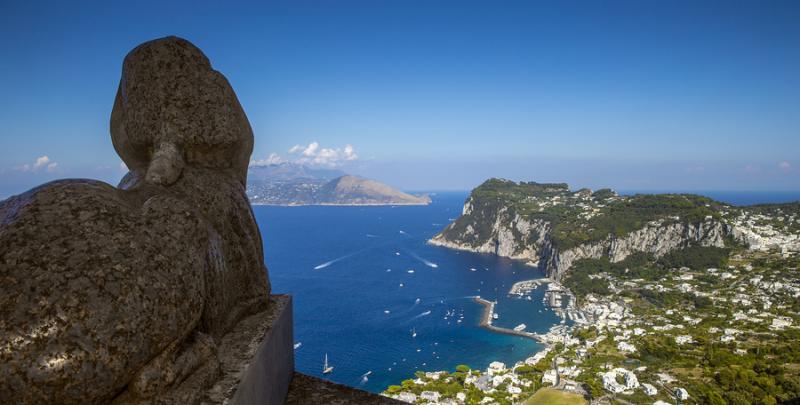A long, steep stone staircase connects the port of Marina Grande in Capri with the town of Anacapri, 300 meters above. Made up of 921 steps dug out of the side of Mount Solaro, Scala Fenicia was built by Greek colonists around the 5th-4th century BC, most likely on a pre-existing trail. Just like in other Greek towns, it connected an inhabited village by the sea with a citadel at the top for the transportation of goods. Today, it is one of the great walks on Capri, an island particularly suited to be explored on foot.
The itinerary starts out flat in Marina Grande, amid lemon groves and silent doors. It then enters the woods, and in this stretch the sea is barely visible, peeking amid the leafy branches. As you keep going, the vegetation thins out, the view opens up, to reveal the port of Marina Grande, almost one with the sea, and nearby the white and pink colors of Capri, with the funicular, the bell tower on the piazzetta; as you keep going up, the profile of the Vesuvius volcano, and the Sorrentine peninsula start to reveal themselves.
Along the way, you'll find the small 17th century Church of San Antonio, erected by Anacapri fishermen who went to pray there before embarking on their sea journeys.
After about 900 steps, you will encounter a centuries-old epistyle: it is the so-called ‘porta della differenza’, Door of Difference, which once signaled the border between Capri and Anacapri, rival for centuries mostly for economic reasons as the inhabitants of Anacapri were completely dependent on Capri due to their lack of ports and water sources.
The Scala Fenicia ends at Villa San Michele. It was built by Swedish-born doctor and writer Axel Munthe, who, at 19, arriving near the top of the staircase, bewitched by the view of the Gulf of Naples, decided he would one day build his home there. It stands on the spot where there was a chapel dedicated to San Michele, as well as Roman ruins which the island’s inhabitants kept destroying or throwing in the sea because they belonged to Tiberius and were therefore considered ill-fated.









